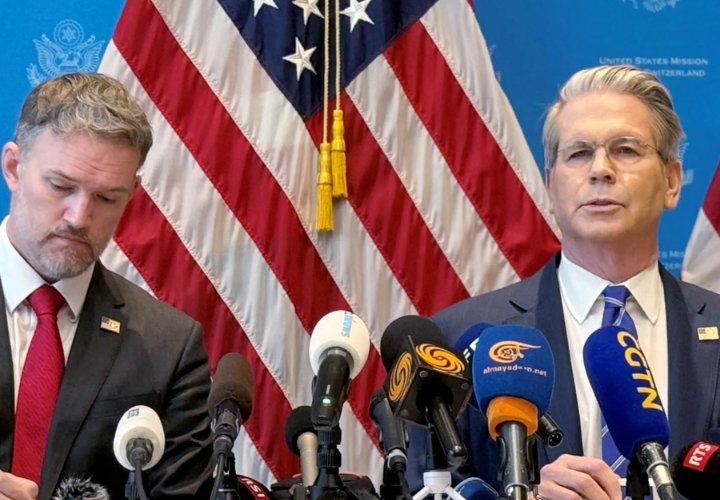US and China Agree to Tariff Reduction in Trade Truce
The United States and China have reached a significant agreement to de-escalate their ongoing trade dispute by reducing import taxes on goods traded between the two nations. This marks a major shift in the trade war between the world’s two largest economies, which has had a ripple effect on global markets, including the UK.
Key Details of the Agreement
Both nations have confirmed the reduction of tariffs imposed on each other, which were initially escalated by President Donald Trump earlier in the year. The deal includes the cancellation of some tariffs and the suspension of others for 90 days, effective by May 14.
-
US Tariffs on China: The additional tariffs that were introduced during this trade standoff will decrease from 145% to 30%.
-
Chinese Tariffs on US: Recently increased tariffs on some US imports will fall from 125% to 10%.
-
China’s Non-Tariff Measures: China has also lifted restrictions such as halting the export of critical minerals to the US, which were previously imposed as countermeasures in response to the tariff escalation.
However, the US still retains an additional 20% tariff aimed at pressuring China to curb the illegal trade of fentanyl, a potent opioid drug.
This agreement follows a round of talks between US and Chinese officials in Switzerland, marking the first dialogue between the two nations since the tariff war reignited earlier this year.
What Happens After 90 Days?
Predicting the trajectory of this trade dispute has been challenging, but the truce is a notable development between the two largest global economies. The deal has been met with general approval, although the future remains uncertain. If the suspended tariffs are reinstated after the 90-day period, US tariffs would rise to 54%, while Chinese tariffs would increase to 34%. Nevertheless, ongoing talks between the two governments are expected, potentially leading to further agreements.
US Treasury Secretary Scott Bessent emphasized that both countries agree “neither side wants a decoupling,” while China’s commerce ministry described the agreement as a step towards “bridging differences and deepening cooperation.”
Despite the optimism surrounding the agreement, it is important to note that, as with many aspects of the Trump administration, the situation could change rapidly.
Key Trade Goods Between the US and China
The trade relationship between the US and China covers a vast range of goods. In 2024, the largest category of US exports to China was soybeans, which are primarily used to feed China’s large pig population. Other significant US exports include pharmaceuticals and petroleum.
On the other hand, China exports a variety of electronics, computers, and toys to the US. The biggest US import from China is smartphones, accounting for 9% of the total imports, many of which are Apple iPhones manufactured in China.
However, the US imports far more from China ($440 billion) than it exports to the country ($145 billion), a trade imbalance that President Trump has long criticized. The introduction of tariffs was partly intended to encourage US consumers to buy more American-made goods, boost tax revenue, and support manufacturing jobs in the US.
Despite the tensions in recent months, which led to a slowdown in shipping across the Pacific, investors remain hopeful that this truce will lead to a rebound, with shares in major shipping companies seeing an uptick.
Has There Been a Clear Winner?
Both the US and China are framing the agreement as a win, though perspectives differ on who benefits most from the deal.
In China, many view the truce as a victory for the country, interpreting it as the US walking back from its aggressive tariff stance. Janka Oertel, director of the Asia programme at the European Council on Foreign Relations, notes, “We are back to square one, now negotiating can begin. The outcome is uncertain, but China is in a psychologically stronger position now than before.”
In the US, the White House is touting the agreement as a win, with a statement claiming that it showcases “President Trump’s unparalleled expertise in securing deals that benefit the American people.” Even though the US tariff rate on Chinese imports has been reduced, the 30% tariff is still significant.
Economists at Deutsche Bank suggest that the lowering of tariffs, along with last week’s UK-US deal on tariffs, sets a “likely cap and floor” for US tariff rates. With the UK now having a 10% tariff rate on US goods, and China at 30%, this range could guide future tariff decisions for the US.
Conclusion
While the US-China tariff truce is a positive step towards reducing tensions, it is far from a final resolution. The future of trade relations between the two nations remains fluid, with ongoing talks potentially shaping the global economic landscape. As both countries continue to negotiate, the ultimate impact on international trade and investment will unfold in the coming months.























